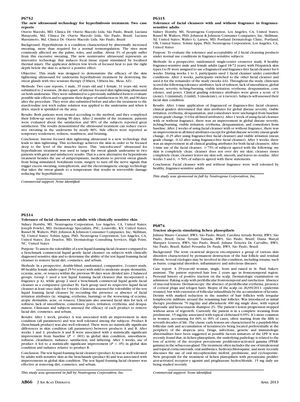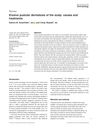Traction Alopecia Simulating Lichen Planopilaris
February 2013
in “
Journal of the American Academy of Dermatology
”
traction alopecia lichen planopilaris perifollicular erythema corneal plugs telogen hairs prednisone albendazole diprosalic ketoconazole shampoo topical clobetasol corticosteroids antibiotics hydroxychloroquine oral mycophenolate mofetil cyclosporine pioglitazone hydrochloride LPP telogen phase Diprosalic Nizoral Clobex steroids Plaquenil CellCept Neoral Actos

TLDR A woman's hair loss looked like a different condition due to her hairstyle, and treatment stopped further hair loss but didn't regrow hair.
The document presents a case report of a 29-year-old woman who experienced hair loss in the frontotemporal region due to traction alopecia, which initially simulated lichen planopilaris (LPP). The patient had a history of applying traction to the scalp and presented with flaking and hair thinning in the affected area. Dermatoscopy revealed the absence of perifollicular erythema but the presence of corneal plugs and telogen hairs. A scalp biopsy showed a marked reduction in hair follicles and irregular lymphocytic infiltrate around the remaining follicles. Treatment with prednisone, albendazole, diprosalic, ketoconazole shampoo, and topical clobetasol was initiated, which halted the progression of the lesion but did not result in hair regrowth. The report also discusses the commonality of LPP in women and the various treatments available, including corticosteroids, antibiotics, hydroxychloroquine, and newer treatments like oral mycophenolate mofetil, prednisone, cyclosporine, and pioglitazone hydrochloride. No commercial support was identified for this case report.
